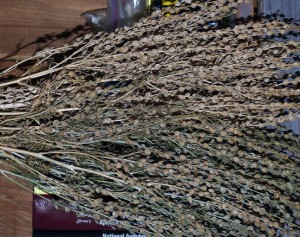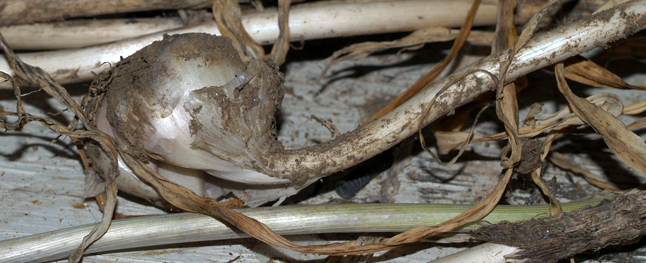
By Sandra Davis and Leslie Savage
You may already be saving seeds for your garden next year. Or maybe you plan to go with catalogues—gardening porn displaying titillating photos of gorgeous and possibly airbrushed tomatoes for which seeds can be bought, months in advance of springtime. At this time of the year most gardeners start to ponder next season: what to plant where, which plants have done best in which space, what needs to be done now to prepare the beds for next year. And which seeds to plant when spring comes.
Some seeds last almost forever. Humans have always saved seeds — celebrating the successes of the season and ensuring the next year’s healthy crop. Communities shared in the fruits of their labours in the garden. The long view of history notes that archeologists have found and sprouted seeds that are thousands of years old—seeds found in pots buried with their owners. The goal was surely to send off the loved ones well equipped, when Jesus wanted them for sunbeams, with the seeds of plump squashes and zingy peppers safely stored beside the rubies and golden trinkets.
Recent history reads less generously. In the early 1980s, transnational companies started creating genetically modified seeds that they claim will grow more nutritious, stronger, more disease- and pest-resistant plants. What sometimes gets lost is flavour and variety, and we unfortunately eat the bland results of industrial agriculture.
As well, corporate seed producers created terminator seeds: seeds genetically altered for quantity and weight in produce, but that are in each case

incapable of natural reproduction, so yielding themselves no viable seedstock. Seed companies hold patents on seeds, making the sure that the seeds cannot be lawfully collected. Imagine being arrested for saving seeds in your own garden!
You may not wish seeds for eternity, but saving your own makes economic sense and also ensures a sense of independence. You can emulate your successes this year in next year’s garden with a few easy steps. Many home gardeners are going back to the heritage varieties of seeds that they remember their parents or grandparents growing.
Seeds are very easy to save, as long as the plants are close to maturity and the seeds are completely dry when you store them. Seeds are best if left to dry on the plant or within the fruit itself and then removed. Finish the seed drying on screens or cookie cooling racks. You can even dig up entire plants and bring them indoors to dry. It is always advisable to save seeds from several different plants to ensure healthy cross pollination.
Always store seeds in a cool, dry place. Some gardeners freeze their seeds. Most vegetable seeds, with a few exceptions like onions, remain viable for 3-5 years. Use envelopes or plastic bags and make sure to write not only the name of the vegetable, but also the cultivar, and the date harvested. Keep your seed envelopes in an airtight tin.
How do you choose which seeds to collect? Which traits in the plant are most desirable to you. Is it flavour, size, colour, shape, or hardiness? Often flavour is the main factor in choosing which seeds to collect. Often a single plant will yield enough seeds to share with friends and neighbours.

Plants like peas and beans are easy to save, and usually at garden cleanup a few overlooked pods will have dried down. Peas and beans dry better in their pods. Later, simply shell the dried pods, and place the dry beans or peas onto a tray to dry an additional few days before storing.
Cucumbers are also easy to gather seeds from. Simply slice a ripe cucumber in half lengthwise and scoop out the seeds and pulp. Place into a bowl and allow to ferment for a few days to break down the jellylike coating on the seed. The seeds that float to the top are discarded, with the best, plump seeds sinking to the bottom of the bowl. Dry on screens or trays before storing.
Tomatoes are probably the most popular fruit grown in the garden, and one of the most easily saved seeds. Simply scoop out some seeds from your favorite home grown tomato, rinse in fresh water, then dry on a plate, screen or tray. Some gardeners harvest tomato seeds in the fermentation process like cucumbers, although it is not necessary in small amounts.
Potatoes and garlic are very easy. Simply keep a few tubers or heads of garlic in reserve to plant again next season. Potatoes store well if they are covered in sand, and kept in a dark, cool place. Garlic is best stored in bulbs rather than individual cloves.
Dan Jason, owner of Salt Spring Seeds, and president of The Seed and Plant Sanctuary for Canada, sums it up: “The seeds that will sustain us are the ones that can be easily and joyfully saved by anyone who is reading these words”.
Good Gardening!




